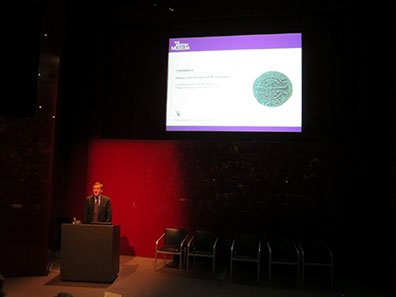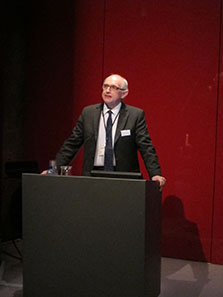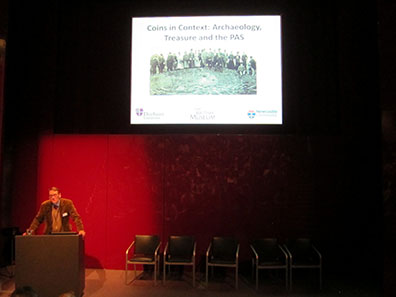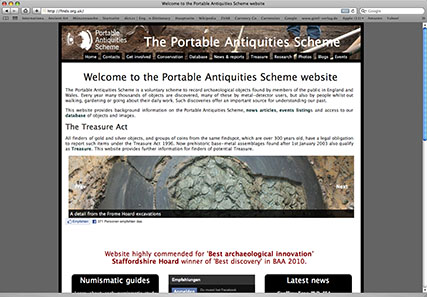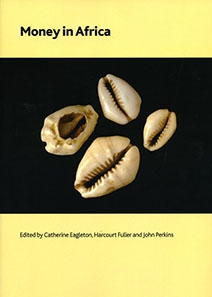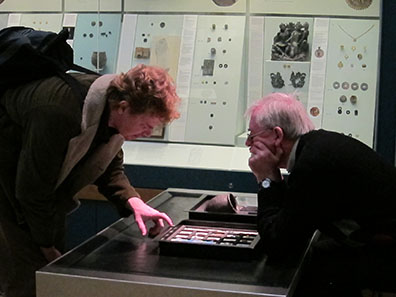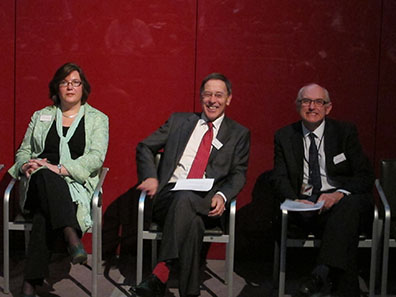February 24, 2011 – In 1861 the Department of Coins and Medals was separated from the Antiquity Department. Since then the BM coin cabinet is ranked among the biggest and most active numismatic research centers. On Friday, February 18, 2011 its 150th birthday was celebrated. A colloquium marked this special occasion.
“Museums and the future of UK numismatics“ – that was the title of this event. Lecturers mostly members of the British Museum staff described the position of the BM coin cabinet in the past and the present and outlined some ideas for the future.
Neil MacGregor, Director of the British Museum welcomes the participants of the colloquium.
It goes without saying that the BM owned a nice coin collection of about 20.000 pieces, when it was founded in 1753. As “metal manuscripts” these numismatic objects formed part of the Department of Manuscripts, before they were affiliated to the Department of Antiquities in 1803. When the Department of Coins and Medals was founded in 1861, the museum owned already more than 157.000 numismatic pieces.
The real increase of the collection began at the end of the 19th century. Great Britain was the leading colonial power of that period. English officials formed coin collections all over the world and donated them to the British Museum. Today we only can estimate the inventory: About one million coins, medals, banknotes and other numismatic objects are fostered and interpreted in the Department of Coins and Medals.
Andrew Burnett, former Director of the Coin Cabinet, today Deputy Director of the British Museum, gave a lecture on the scholarly achievements of the numismatic department in the BM.
Today, 17 numismatists are in charge of the coin collection. With them the British Museum owns the world wide most numerous staff of numismatists. They can be proud of their predecessors who have published epochal books like the Catalogue of the Greek Coins in the British Museum, the Catalogue of the Oriental Coins or the RIC, the Roman Imperial Coinage.
Then, publishing was the most important task of a curator. Today it is just one among many other duties.
Sam Moorhead presents the lecturers who report on the challenges the Portable Antiquities Scheme carries with itself.
They have to cope with an incredible mass of material, brought into the BM by the Portable Antiquities Scheme for a first evaluation. There is no other museum in the world, which has to handle such a huge amount of material. This is not due to the former wealth of England, but to the exemplary legislation.
Website of the Portable Antiquities Scheme.
How do you clean 52.000 coins (from the Frome Hoard) in order to prepare them for a first appraisal and a scholarly evaluation? This is just one of the problems, the British Museum is proud to have solved. And of course all scholars rhapsodize about the enormous progress the reconstruction of the English prehistory and the early medieval period has made thanks to the broad basis of material coming from the Portable Antiquities Scheme.
How to raise the money in order buy important objects, especially hoards, this was the theme of Gareth Williams. He presented new patterns like two museums buying a hoard together.
The Africa Project is an initiative of the British Museum. A first survey of the existing knowledge was published in 2009.
All over the world there is no bigger numismatic research center connected with a museum than the BM. Unsurprisingly, the Department of Coins and Medals has started many innovative projects. One of them is dedicated to African money. It was initiated in 2006. Under the direction of Catherine Eagleton a team of scholars from the BM and from Africa tries to reconstruct the monetary history of the “dark continent”. They are using an interdisciplinary approach and search for cooperation with African museums. Sharing material and knowledge is the best basis for broadening the horizon.
Hands on: A new form of familiarizing visitors with objects. This form of museum education was developed in the Money Gallery of the British Museum.
Innovation is one of the secrets of the BM’s success. Here, museum education belongs to the most important issues. For example, the Hands-on project has become an export hit. It is based on the observation that a visitor develops a completely different relation to any object as soon as he holds it within his hands. While touching objects is normally strictly forbidden in museums, it is done here on purpose. Volunteers are sitting behind tables full of coins, which visitors are allowed to touch.
The website of the BM features a catalogue of highlights from the collections. All photos can be downloaded for non-commercial purposes.
Of course, the Internet is winning importance. It distributes the knowledge about the treasures of the British Museum among users all over the world. You can use a whole bunch of services at the Website. Take a virtual stroll through the exhibition rooms! View the most important objects of the museum! Search online for objects of the collection!
The British Museum offers its pictures on the net for educational and scientific purposes without any cost.
Christel Schollardt, President of ICOMON, and Nick Mayhew, Deputy Director of the Ashmolean Museum / Oxford, congratulate Andrew Burnett.
What will be the function of the British Museum coin cabinet within the future? Of course, there were many thoughts and wishes. Christel Schollaardt, president of ICOMON, hoped for an intensive participation of the BM in the committees of the international world of numismatics.
Nick Mayhew, Deputy Director of the Ashmolean Museum / Oxford stressed how intense is the cooperation between the BM and other British museums.
There are few institutions, which are so modern after 150 years of existence. So let’s hope of another 150 years of numismatic collecting and research.
If you want to visit the website of the coin cabinet of the British Museum click here.
If you want to see the highlights of the MoneyGallery click here.
If you want to see all highlights of the British Museum click here.
And in order to find out more about the Portable Antiquities Scheme click here.
If you want to see a short film about the British Museum click here.




